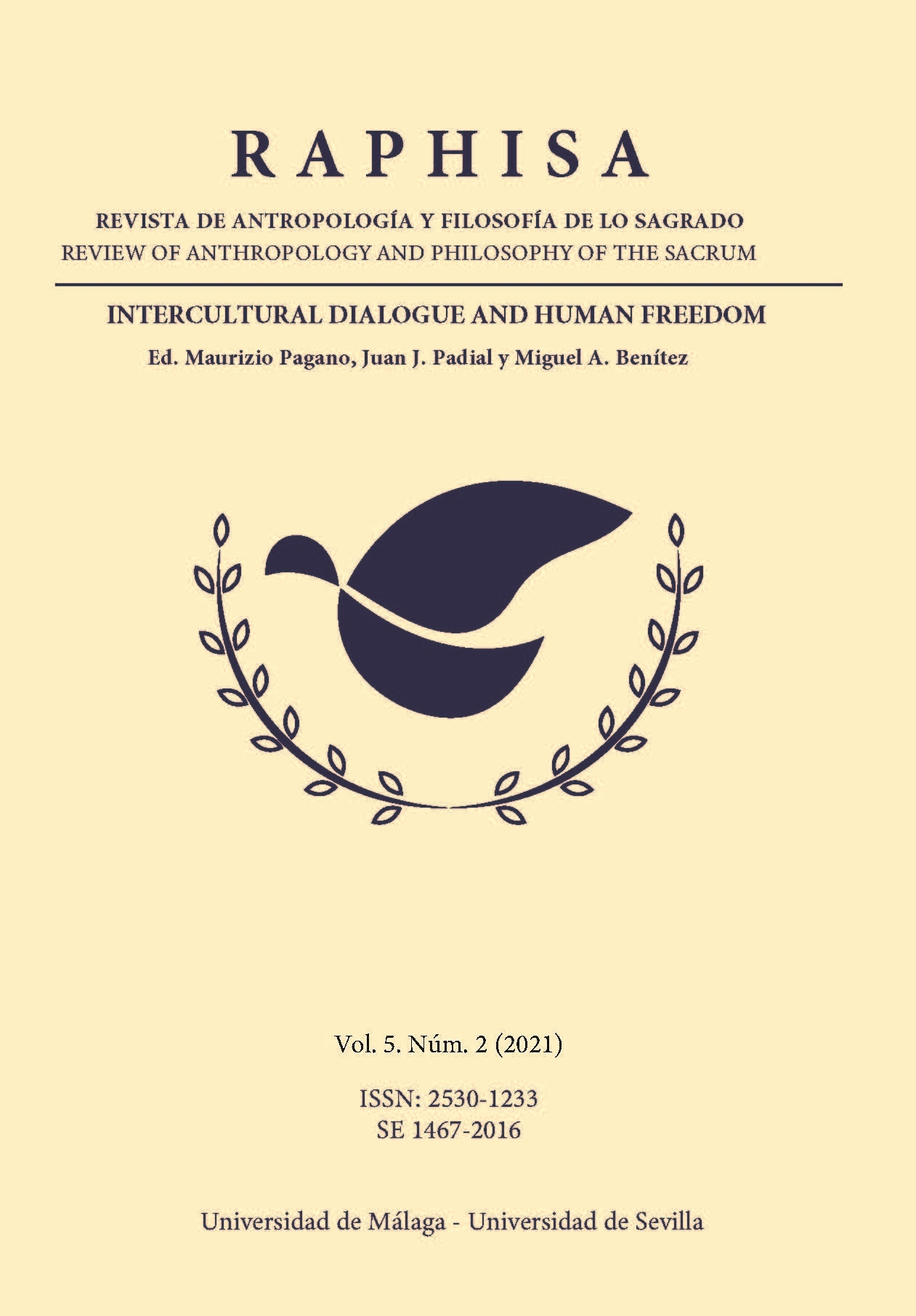The Sura of the Cave as intercultural and metahistorical dialogue in the Qur'an
DOI:
https://doi.org/10.24310/Raphisa.2021.v6i2.13560Keywords:
Corán, metahistoria, dialogo intercultural, Islam, Judaísmo, CristianismoAbstract
The Sura of The Cave (al-Kahf) is one of the most vibrant and fascinating symbolic spaces in the whole Qur'anic text. This sura brings together four major symbolic and cross-cultural narratives with clear references to the Jewish tradition (Mishna, Talmud), the classical world (the Sleepers of Ephesus, Alexander the Great) and late antiquity (the visions of the Syrian world) in a purely cross-cultural context. Narratives that transcend from the historical to the metahistorical, elaborated in a kairological time and that lead the reader to reflect on the triumph of the symbolic, the problem of evil and the unfathomability of divine decisions. The aim of this paper is to reflect philosophically on how all these elements become a profound intercultural and metahistorical dialogue within the Qur'anic prophetic experience that the believer relives in his reading.
Downloads
Metrics
References
Brown, Peter: El mundo de la Antigüedad tardía: De Marco Aurelio a Mahoma. Madrid: Taurus, 2021.
Corbin, Henry. Histoire de la philosophie islamique. Paris: Gallimard, 1968.
Gismondi, Henricus. Linguae syriacae grammatica et chrestomathia cum glossario scholis accommodata. Beirut: Typographia pp. Soc. Jesu, 1900, pp. 45-53 <http://syri.ac/bibliography/1246534239>
Guidi, Ignazio. Testi orientali inediti sopra i Sette dormienti di Efeso. Romea: Academia dei Lincei, 1885. < https://archive.org/details/testiorientalii01guidgoog>
Jung, Carl Gustav. Obras Completas. Vol. 9. Madrid: Trotta.
Netton, Ian Richard. “Towards a Modern Tafs?r of S?rat al-Kahf: Structure and Semiotics”. Journal of Qur'anic Studies, 2000, vol. 2, no 1, p. 67-87.
Nöldeke, Theodor, et al. The history of the Qur’?n. Leiden: Brill, 2013.
Panikkar, Raimon. Mito, Fe y Hermenéutica. Barcelona: Herder, 2007.
Panikkar, Raimon. Obras Completas, vol. 6.2. Barcelona: Herder, 2017.
Reynolds, Gabriel Said. The Quran & The Bible. New Haven: Yale, 2018.
Scharf, Riwka. “Die Gestalt des Satans im Alten Testament” en Jung, Carl Gustav (ed.). Symbolik des Geistes. Zurich: Rascher Verlag, 1948.
Speyer, Heinrich. Die bIblíschen Erzählungen im Qoran. Hildesheim: G. Olms, 1931.
Downloads
Published
How to Cite
Issue
Section
License
License permitted by the journal: Public Domain. Authors retain the copyright and full publishing rights without restrictions.






